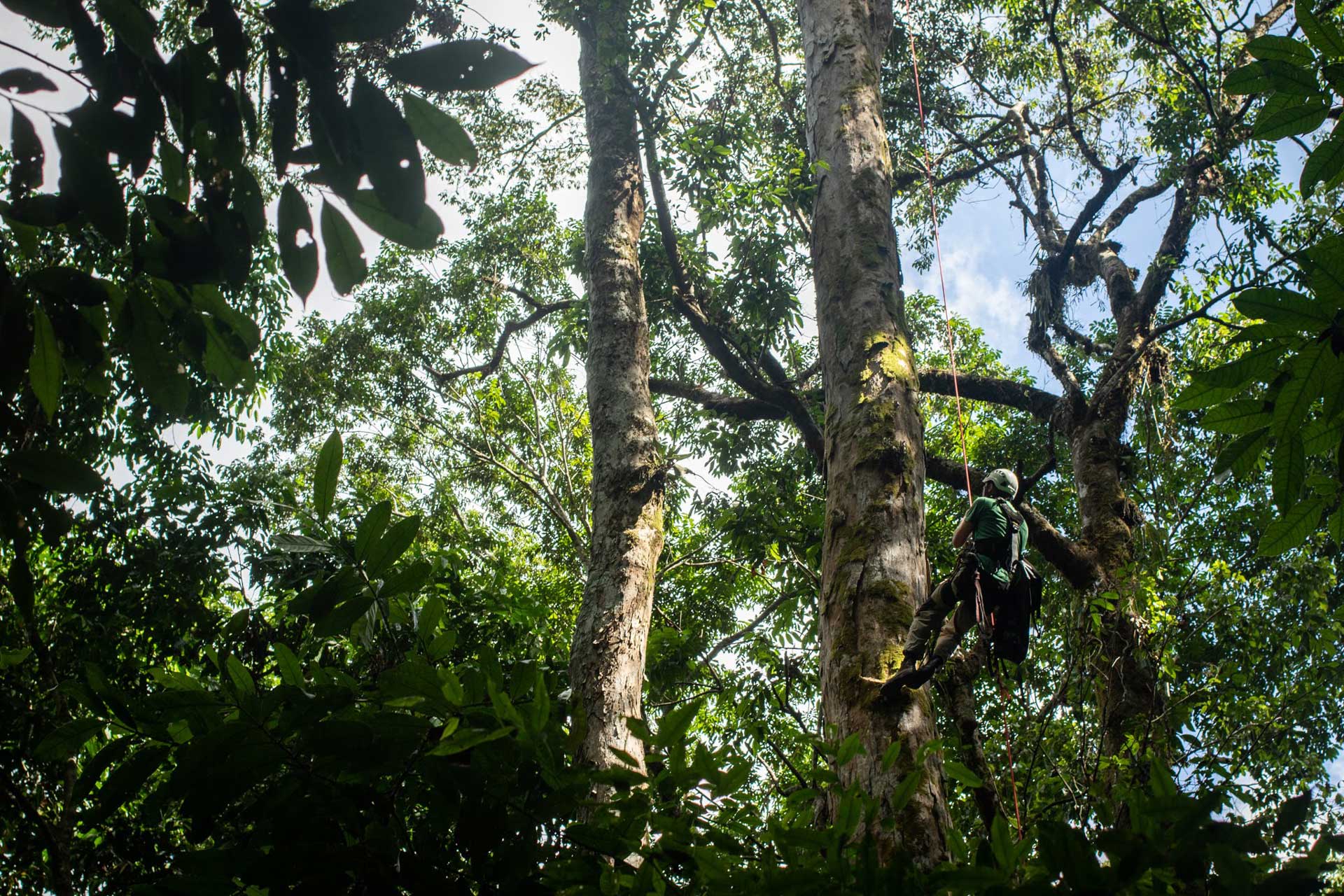
Ochroma pyramidale
Ochroma pyramidale
Balsa, Balso
Audio
English Audio
Audio en Español
Plant Story
The balsa tree is one of the most common and representative species of low elevation, humid climates in Costa Rica. The balsa thrives in altered areas like secondary forests, making it a great species for the restoration of degraded areas. Its flowers are large and pollinated by bats, and its fruits open and contain a fairly light cotton, which allows the seeds to travel long distances through the wind. The cotton has been used as stuffing, and its wood is well known for being extremely light and has multiple uses. The balsa is distributed naturally from Mexico to Brazil, but is cultivated throughout the tropics of the world.
Historia de la planta
El árbol de balsa (Ochroma pyramidale) es una de las especies más comunes y representativas de las zonas bajas de climas húmedos de Costa Rica; esta prefiere las zonas intervenidas y bosques secundarios, por lo que tiene un gran potencial para restauración de áreas degradadas; su madera es muy conocida por ser extremadamente liviana, por lo que tiene múltiples usos, además el algodón que produce el fruto se ha usado como rellenos. Las flores son grandes polinizadas por murciélagos, los frutos se abren y contienen un algodón bastante liviano, que le permite a las semillas viajar largas distancias a través del viento. Se encuentra naturalmente desde México hasta Brasil, pero se cultiva en todos los trópicos del mundo.
Plant details
Plant Information
Botanic Name:
Ochroma pyramidale
Common name(s):
Balsa, Balsa, Balso
Family
Malvaceae
Phenology
Flowering Months:
January, August, September, October, November, December
Fruiting Months:
February, March, April, May, Jun, July, August, September, October, November, December
Conservation
IUCN category:
Least concern / Menor preocupación (LC)
CITES:
Not protected / Sin protección
Interesting Links
Plant Locations
Balsa
Plant details
Audio
English Audio
Audio en Español
Story / Historia
Plant Story
The balsa tree is one of the most common and representative species of low elevation, humid climates in Costa Rica. The balsa thrives in altered areas like secondary forests, making it a great species for the restoration of degraded areas. Its flowers are large and pollinated by bats, and its fruits open and contain a fairly light cotton, which allows the seeds to travel long distances through the wind. The cotton has been used as stuffing, and its wood is well known for being extremely light and has multiple uses. The balsa is distributed naturally from Mexico to Brazil, but is cultivated throughout the tropics of the world.
Historia de la planta
El árbol de balsa (Ochroma pyramidale) es una de las especies más comunes y representativas de las zonas bajas de climas húmedos de Costa Rica; esta prefiere las zonas intervenidas y bosques secundarios, por lo que tiene un gran potencial para restauración de áreas degradadas; su madera es muy conocida por ser extremadamente liviana, por lo que tiene múltiples usos, además el algodón que produce el fruto se ha usado como rellenos. Las flores son grandes polinizadas por murciélagos, los frutos se abren y contienen un algodón bastante liviano, que le permite a las semillas viajar largas distancias a través del viento. Se encuentra naturalmente desde México hasta Brasil, pero se cultiva en todos los trópicos del mundo.
Plant Information
Botanic Name
Ochroma pyramidale
Common name(s)
Balsa, Balso
Family
Malvaceae
Phenology
Flowering Months
January, August, September, October, November, December
Fruiting Monts
February, March, April, May, Jun, July, August, September, October, November, December
Conservation
IUCN category
Least concern / Menor preocupación (LC)
CITES
Not protected / Sin protección
Interesting Links
Plant Locations
Post A Comment
You must be logged in to post a comment.







No Comments